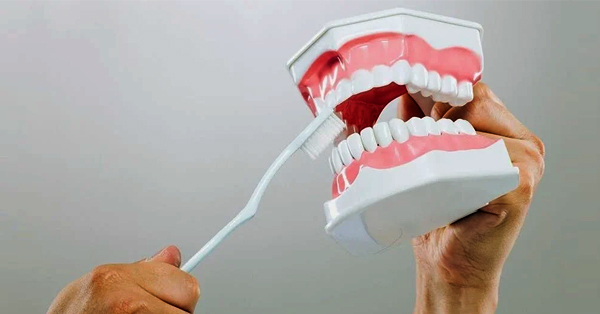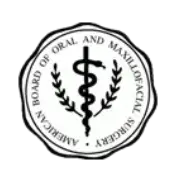10 common oral hygiene mistakes, according to dentists
By: Wendy Rose Gould, NBC News
According to the CDC, more than 80% of people develop at least one cavity by age 34. Genetics play a factor in tooth decay as well as the most common oral hygiene mistakes listed in this article via NBC News. The Oral Surgery DC Team
It's been ingrained in your mind since you were old enough to wield a toothbrush: spend two minutes brushing your teeth three times a day. You still might even hum a familiar tune every time you step in front of the sink or go through the exact same "up and down, round and round" motions you did at age five.
However, according to the Centers for Disease Control, more than 80 percent of people develop at least one cavity by age 34, so something's not quite adding up. While genetics plays a factor in your likelihood to experience tooth decay, it's not the only variable. To uncover some of the most common oral hygiene mistakes that may be contributing to the problem, we asked dentists to weigh in.
Problem #1: Only brushing in the morning
Many are naturally compelled to brush in the morning in order to curb bad breath, but it's all too easy to neglect nighttime brushing as we climb into bed exhausted.
"By the end of your day, you have the most amount of food debris stuck on and in between your teeth. Additionally, when you sleep, your mouth is the least active for saliva production, which functions to help bathe the teeth clean," explains celebrity dentist Dr. Jon Marashi. "As a result, the bacteria in your mouth now have a festive food supply in which they consume. The by-product is an acid secretion that leads to tooth decay. Brushing your teeth at night is non-negotiable."
Problem #2: Brushing your teeth too hard
There's a misconception that says the harder we scrub, the better we clean. This is false.
"Aggressive scrubbing over time can cause enamel abrasion and gum recession, ultimately leading to sensitivity issues and tooth structure loss," warns New York City-based dentist, Dr. Inna Chern. "Ideally, you should use a soft-headed toothbrush, or an American Dental Association (ADA)-approved electric brush, which comes standard with soft heads."
Signs that you're scrubbing too hard include a frazzled brush head in as little as one to two months, increased sensitivity, and a receding gum line. If you can't break the habit, Dr. Chern recommends using an electric brush with a pressure indicator.
Problem #3: Not spending enough time brushing
Even if you've committed to brushing your teeth throughout the day, the effort is for naught if you aren't allocating enough time to the task. Dr. Marashi says, "If you don't spend adequate time brushing your teeth, it is likely that the tartar and biofilms will not have a proper removal from the tooth surface, leading to plaque deposits, gum inflammation, bad breath, and even cavities."
Also, he adds, brushing in a hurry often translates to missing teeth in the back, which is where many cavities form. He suggests using a sonic toothbrush with a built-in timer, or you can set a timer on your phone for two minutes.
Problem #4: Replacing flossing with mouth wash
"Although mouthwash is a great add-on for any oral hygiene regimen, it does not take the place of the mechanical cleaning of those hard-to-reach spots in between and around the teeth," notes Chern. "After we eat, food debris gets broken down in the mouth into a compound called material alba. We have an eight to 12-hour window to remove the debris before it hardens into plaque and tartar, which require professional cleaning by your healthcare provider."
Mouthwash disinfects the oral cavity, but it doesn't effectively remove oral debris. Take the extra few minutes to floss with either traditional floss or a water flosser. In addition to getting a better clean, Chern says that people who floss see a marked improvement in gum health between dental visits.
Problem #5: Only using floss picks
While using floss picks is better than not flossing at all, they're not as effective as traditional string floss or water flossers. "Most people don't even use the picks to their fullest potential [and instead] 'pop' them through the contacts and move on to the next space," says Dr. Irina Sinensky, a dentist for NYC's Dental House. In addition to not being thorough enough, "this can also spread bacteria from one location to another. It's the up and down cleaning motion of each root surface that is recommended," she says.
Problem #6: Not flossing because you see blood
"Patients tell me all the time that they don't floss because their gums bleed when they do. I tell them to floss more instead," says Dr. Sinensky. "Unhealthy gums - usually caused by bad oral hygiene - will bleed easily when they are touched. It's like having a splinter under your skin that you never remove. The body will try to rectify the situation by bringing blood to the area and try to get rid of the infection."
The more you floss, the less you'll bleed and the better your oral health will be. Sinensky says to try a one-week challenge of flossing daily. You'll see a significant improvement.
Problem #7: Drinking a sugary beverage at lunch
Gulping a sugary energy drink or soda may keep you mentally powered throughout the day, but it's wreaking havoc on your oral health.
"A 16-ounce can, can have upwards of almost 30 grams of sugar," says Marashi. "Sugars are carbohydrates that oral bacteria like to consume, and sugars are also acidic which can cause chemical erosion of your teeth."
If you need a caffeine fix, swap out your sugary drinks for black or green tea, which are better for your oral health (and your overall health) since they don't contain nearly as many sugars. You can also opt for coffee. To avoid staining, sip through a straw.
Problem #8: Buying whatever toothpaste is on sale
All toothpaste is not created equal. The better deal might not serve you well.
"It is important to look for the American Dental Association (ADA) stamp on products because the ADA ensures that proper testing has been done on a given toothpaste and that it contains the minimum amount of therapeutic ingredients to maintain a healthy, cavity-free mouth," says Chern, who adds that this is also important when it comes to buying "all-natural" products. "Ask your dental healthcare provider for their opinion of the best toothpaste to suit your individual needs. For example, if you have cavity issues it is important to use a toothpaste with fluoride and if gingivitis is an issue, there are a slew of toothpaste that can help with minimizing inflammation," says Chern.
Problem #9: Using non-ADA approved whitening products
Similarly, not all whitening products are created equal. Chern says to only use products that have earned ADA stamps, which indicates the product's been rigorously tested for formulation and efficacy. "The other products on the market may be a dice roll and cause issues such as sensitivity and damage, or not work at all," she warns. "When in doubt, talk to your healthcare provider so they can educate you on the various over-the-counter products on the market."
Problem #10: Only seeing the dentist when you're in pain
Leaving work early to get to the dentist is, well, a pain - but it will save you real pain in the long run. Seeing a dentist regularly ensures your teeth and mouth are healthy. If you wait until you feel the pain to see the dentist, there's a strong likelihood you're dealing with a serious issue versus one that could have been addressed effectively - and less expensively - much earlier.
"Many believe that if their mouth doesn't hurt then there are no problems, and therefore they do not see their dentist regularly. However, a more intense and expensive treatment will be required if patients neglect to see their dentists at regular intervals and treat the small issues that may arise," says Sinensky.
You should see your dentist for a regular checkup every six months. How long has it been for you? Time to get an appointment on the calendar.






4.9 Stars
based on 134 reviews
5 Stars
based on 11 reviews
5 Stars
based on 11 ratings